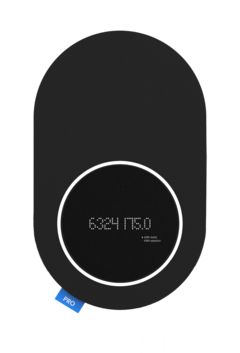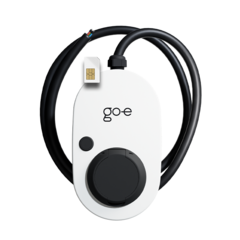Wallbox Installation for Tenants: Is It Actually Possible and How? Find Out in Our Step-by-Step Guide
More and more people are buying their own wallbox to charge their electric cars, especially homeowners since they can easily install it at home. Tenants are more hesitant because it’s a bit more tricky. Some aren’t sure about the legal aspects, others don’t want to ask their landlord for permission, and some worry about the cost.
But is it really that complicated? What does it actually take for a tenant of an apartment in a rental complex, which includes cooperative apartments, to get permission to install a wallbox? And who bears the costs? Let's break it down.
Quick access to the content
Prerequisites for Installing a Wallbox in Germany
You still think that having your own home wallbox in Germany is a privilege for house owners? Not anymore.
In Germany, as a tenant, you have the right to a wallbox in the rented parking space or parking space in the underground garage, unless there is a valid reason, such as the rental facility being a listed building.
According to Section 554 Paragraph 1 of the German Civil Code, your landlord must give their consent to structural changes if they are for the purpose of charging electric vehicles. This applies unless the structural measures are unreasonable (e.g. due to excessive costs). However, as a tenant in Germany, your chances of getting approval for EV charging for apartments are generally high.
Do you want to allow Integration of youtube videos?
Allows the playback of videos, that are hosted on youtube.com. By allowing this feature, you accept the privacy agreement of google.
Who Pays for the Wallbox?
When it comes to covering the cost of purchase and installation, you as a tenant have three main options.
1. You cover the costs yourself
If you get approval to install a private wallbox in your parking space, you can choose to pay for it yourself. When you move out, you can take the wallbox with you to your new place.
2. Shared costs
If other tenants are also interested in having a wallbox or if the landlord or owner agrees to cover part of the expenses, it can reduce your share of the expenses.
3. Apartment owner covers the costs
If the owner decides to pay for the wallbox, you won't have any direct costs. Since installing a charging station can increase the property's value, your rent may potentially increase.
How to Apply for Installation of a Wallbox as a Tenant In Germany
Sometimes it feels like you want someone to be your guiding star through the whole process, doesn’t it?
1. Find out about possible EV charging for apartments solutions. Some may suggest asking your apartment owner first whether an installation of a wallbox is possible at all. And this is, of course, an option. However, having a certain wallbox in mind will be beneficial for you in two ways. First, it will show that you are well-prepared and really thought it through. Second, suppose the owner of your apartment has a certain idea of what wallboxes can do. In that case, they will be more likely to react positively if you announce that you are getting a smart wallbox with, for example, load balancing that will not cause problems with energy management in the building.
2. Before you submit the application to the landlord, it is advisable to make him aware of your request. Perhaps you can discuss one or two options for a wallbox with him to get a feel for how he feels about the project. And who knows, maybe he has already dealt with it himself and is toying with the idea of installing a wallbox for EV charging for apartment buildings. So feel free to check it out. Maybe even ask other tenants in the building in advance whether they are interested in a communal charging solution. After all, this can help to reduce costs, and as a group, you usually have more leverage.
3. Make things more concrete and get ready to submit the application. Choose your preferred wallbox and have a specialist check the location where the wallbox is to be installed, as well as the connection capacity, the distribution box and the electrical installation. this is essential to ensure that there are no hurdles or unexpected surprises due to the construction work. If, for example, the connection capacity is not sufficient, then your wallbox must definitely enable dynamic load balancing or the connection may even have to be expanded, which leads to delays and higher costs. The latter is unlikely to occur with a single wallbox, however. And if necessary, load management can help.
Note: If you as a tenant want to install a communal charging solution, i.e. several wallboxes for the building community, then your wallboxes should have smart functions anyway, such as an RFID function for charging authorisation or dynamic load balancing to avoid overloading the building connection.
4. Send the application for installation to your landlord by email or letter. In most cases, as already mentioned, this will be granted.
Write down the general conditions in the rental agreement so that there are no misunderstandings. Make sure you specify who will pay for the wallbox, and who owns the device and is therefore responsible for maintenance and operation. What happens after you move out? And who is actually liable for any malfunctions of the wallbox? And so on and so forth. Clarify these things and put them in the contract so that both parties are protected.
5. Order a wallbox and set up EV charging for apartment buildings. As soon as the application has been approved, you or your landlord can actually commission the installation from a professional. The qualified electrician will install the wallbox and also take care of things like registration with the network operator.
How to Apply for Installation of a Wallbox as a Tenant in Austria
There are still plenty of legal aspects to consider for tenants in Austria willing to install a home wallbox. You’re responsible for handling the technical and legal side of things and covering the costs.
If you want to make changes to your rented property, Section 9 of the Tenancy Act applies, as long as your tenancy falls under the full scope of the MRG. This includes old buildings and council flats, among others. Plus, you need to have rented a parking space along with your apartment. If you only rented the place to live and not a parking space, different legal bases apply.
As a tenant, you are not guaranteed the right to "slow charging" stations, which can charge at a maximum of 3.7 kW single-phase and 5.5 kW three-phase. Setting up your own charging station with up to 11 or 22 kW is typically difficult in multi-tenant buildings in Austria.
Installing a wallbox is a significant change to your rental property, so you must notify your apartment owner. What qualifies as "significant" can vary and depends on factors like the type of parking space and existing infrastructure. For a parking space permanently assigned to your apartment, the installation of electrical connections would clearly be substantial and affect the landlord's rights.
Some steps of this process are very similar to the ones above. But, as they say, the devil is in the details. So make sure you don’t skip this part.
1. Start talking about your idea
Before submitting your application, inform your apartment owner of your wish to install a wallbox and discuss potential options. They may already be considering a solution for EV charging for apartment buildings
2. Look for others to join
Ask other tenants whether they would like to have a shared wallbox installed at your parking place. Since there are charging cables available in different lengths (e.g., go-e type 2 cable 7,5 m), you can be sure they will all be able to reach out with their electric cars.
3. Find a suitable wallbox
After discussing with other tenants and your landlord, prepare your application. Choose a wallbox and have a specialist check the installation site, connected load, distribution box, and electrical installation to avoid any issues. If the connected load is insufficient, dynamic load management may be needed, which can be achieved with our top combo go-e Charger + Controller. In some cases, the connection may need upgrading, which can cause delays and increased costs. However, such issues are rare with a single wallbox.
Note: Sometimes, you need to choose a wallbox depending on your energy provider. For instance, if you receive your electricity from Kelag, a famous Austrian energy provider, you can only install a home charging station from the same brand.
4. Submit an application
Request your landlord's consent in writing, by email or letter, detailing the planned changes for proper assessment. If the owner of your apartment does not refuse within two months, consent is granted. If the owner disagrees, you may need to enforce the installation through arbitration or court. You will be responsible for the modification costs unless agreed otherwise with the landlord.
5. Set up the wallbox and charge from the comfort of your home
Now you're all set! Enjoy charging your electric car right at home. When you head out for work or an adventure the next morning, your battery will be fully charged and ready to go.
Wallbox Billing: Main Options
Billing for costs of EV charging for apartments depends on the electricity meter connection and whether the wallbox is shared. Here are the scenarios:
Wallbox connected to a separate meter in your apartment
If you use the wallbox alone and it is connected to the apartment meter, it will be billed via the calibrated household meter and the tenant's house electricity tariff. This means that the charging current does not have to be billed separately because you pay for it with your current electricity contract anyway.
Wallbox with a separate meter from the energy supplier
If your private wallbox is connected to a separate, calibrated electricity meter from the energy supplier, you will also be billed directly to the energy supplier. However, you will need an additional electricity contract in addition to the contract for your apartment.
Wallbox with an MID-compliant meter
If the wallbox has its own MID-compliant electricity meter, the electricity charged can be clearly assigned to the individual user. The landlord or property management can then bill you separately for the electricity consumption, for example, as part of the utility bill. Your charging current is simply deducted from the general electricity and assigned to you. You should then clarify with the landlord how you will proceed with transmitting the charging data to the landlord. Landlords of larger buildings are likely to rely on backend systems with automatic transmission in the future as more and more charging stations are installed in rental properties.
Shared wallbox with an MID-compliant meter
In the case of EV charging for apartment buildings, if one or more wallboxes are used jointly by different tenants, the measurement of the charging current must be comprehensible and traceable for each individual user. In Germany, a measurement and calibration law-compliant energy meter is required in such cases. If several parties use the wallbox, users must be authenticated, e.g. with RFID chips. This allows the charging current to be calculated precisely for each user. The RFID chip also ensures that only those who are authorised to do so can charge.
Summary
In Germany, tenants have the right to install a wallbox, and apartment owners cannot refuse without a valid reason. If you have prepared your application well and had a talk about it with your landlord and other tenants, you should have no issues.
In Austria, installing a wallbox is a little more challenging for tenants. Therefore, it might be a good idea to collaborate with other tenants to improve your chances of finding an EV charging for apartments solution.
Billing for charging costs depends on the meter connection. Keep in mind that wallboxes with access protection and certified electricity meters are especially suitable for rented apartments. Professional guidance is essential to ensure the installation is safe and compliant with all regulations. If you're a tenant, highlight the advantages of installing a wallbox, such as increased property value and the convenience of charging an electric vehicle at home.



